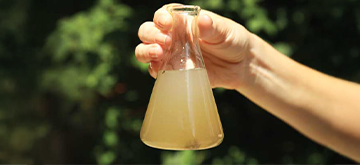
Water contamination
PUBLISHED ON: 04-Jan-2016
Water contamination, also known as water pollution, is a major problem in India. There are several causes of water pollution – the biggest being untreated sewage flowing into our water bodies. Some of this sewage percolates into the ground and contaminates the ground water as well. In fact, a whopping *75-80% of the water pollution found in India is from domestic sewerage alone.
The presence of sewage in the water gives rise to a slew of harmful microorganisms such as bacteria, viruses and protozoa, which in turn leads to an increased incidence of water-borne diseases such as cholera, jaundice and diarrhoea.
Industrial waste is another contributor to water pollution. Most industrial waste is made up of toxic materials and heavy metals, and these often flow into water bodies such as rivers and lakes situated near factories.
Pesticides, weedicides and chemical fertilizers are yet another contributor to water pollution. These pollutants often find their way into water bodies located around agricultural areas. Aside from these, new age contaminants such as lead, arsenic, mercury, fluoride, etc. are also responsible for unhealthy and impure water.
Keep in mind that your water source can also determine the contaminants present in the water you drink. Water tankers and pipes are often responsible for the presence of new-age contaminants. Even rust and the corrosion of metal pipes and taps can cause your drinking water to be highly polluted.
Just any water purification technology cannot effectively purify all these contaminants. One need a specific water purifier to suit your home’s water type. To ensure you and your family is drinking truly healthy and pure water, you need to identify a water purifier customised to your home.
Eureka Forbes water purifiers come with cutting-edge technologies that target specific contaminants present in your water supply. Which means, with a Eureka Forbes water purifier, you and your dear ones can enjoy absolutely healthy and safe drinking water.
*Source : The data is from the ministry of urban development (2013), census 2011 and Central Pollution Control Board
